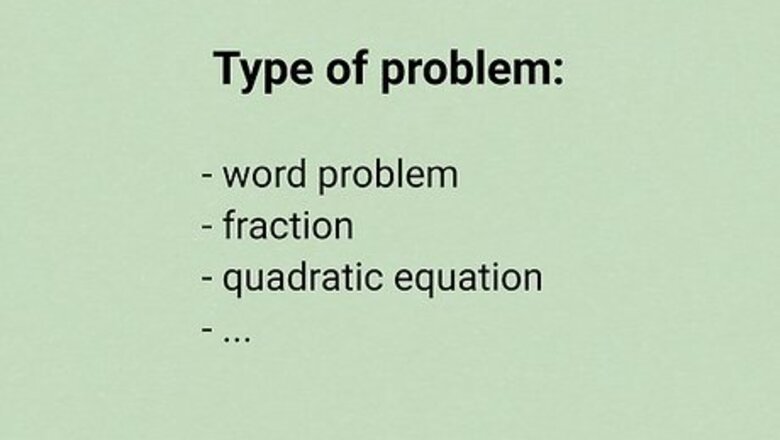
views
Understanding the Problem
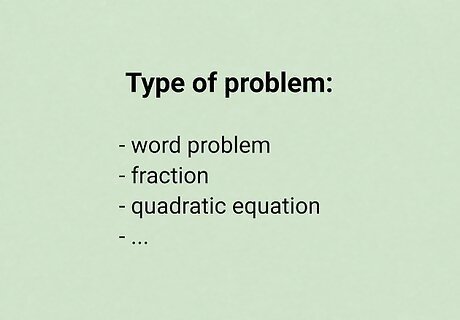
Identify the type of problem. Is it a word problem? Fraction? Quadratic equation? Determine what categorization best fits your math problem before you move forward. Taking the time to identify your problem type is essential to finding the best way to solve the problem.
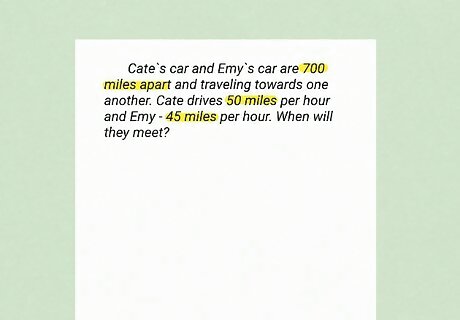
Read the problem carefully. Even if the problem seems simple, read it very carefully. Don't just skim the problem and attempt to solve it. If the problem is complex, you may need to reread the problem multiple times before you fully understand it. Just take your time and don’t move on until you feel confident that you know what the problem is asking you to do.
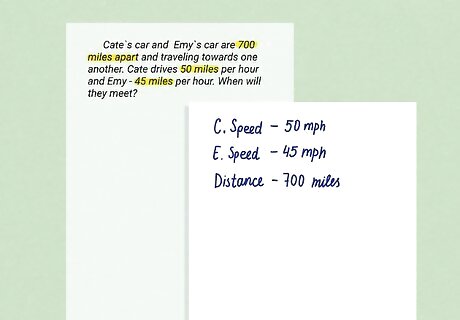
Paraphrase the problem. To help wrap your mind around the problem that you are facing, it may help you to say or write it out into your own words. You can simply say it or write it out if you in a situation where you cannot speak out loud, such as during a test. Check what you have said or written against the original problem to make sure that you are representing the problem accurately.
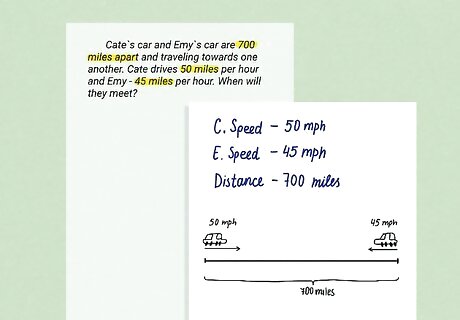
Draw the problem. If you think it will help with the type of problem you are facing, create a visual representation of the problem to help determine what you need to do next. The drawing does not have to be elaborate, it can simply be a shape or shapes with numbers. Consult the problem as you draw and check your drawing against the problem after you have finished. Ask yourself, “Does my drawing accurately represent the problem?” If it does, then you can move forward. If not, start over by rereading the problem. Draw a Venn diagram. A Venn diagram shows the relationships among the numbers in your problem. Venn diagrams can be especially helpful with word problems. Draw a graph or chart. Arrange the components of the problem on a line. Draw simple shapes to represent more complex features of the problem.
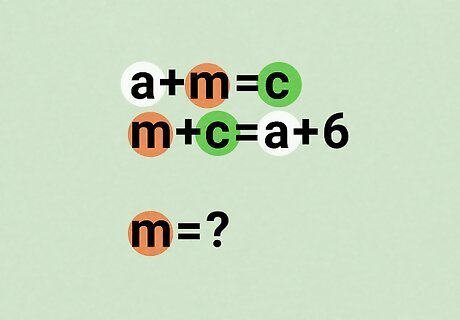
Look for patterns. Sometimes you can identify a pattern or patterns in a math problem simply by reading the problem carefully. You can also create a table to help you identify a pattern or patterns in the problem. Take notes on any patterns that you identify in the problem. These patterns can help you to solve the problem and may even lead you directly to the answer.
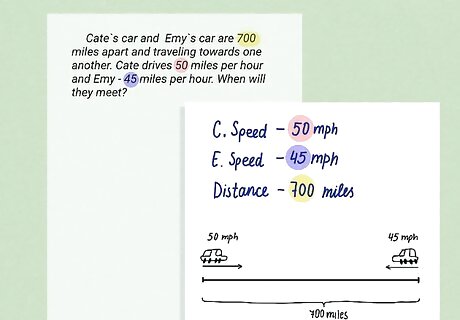
Review your information. Check what you have written down against the problem to make sure that you have accurately copied the numbers and other information. Don't go on to the planning stage until you are certain that you have all of the required information and that you fully understand the problem. If you don't understand the problem, take a moment to look at some examples in your textbook or online. Looking at how other people have correctly solved similar problems may help you to understand what this problem is asking you to do.
Developing a Plan
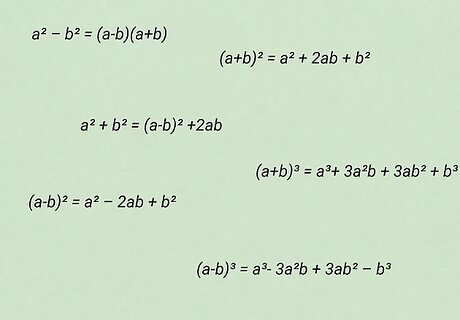
Figure out what formulas you will need to solve the problem. If the problem is particularly complex, you may need more than one. Spend some time reviewing the concepts in your textbook that will help you solve this problem.
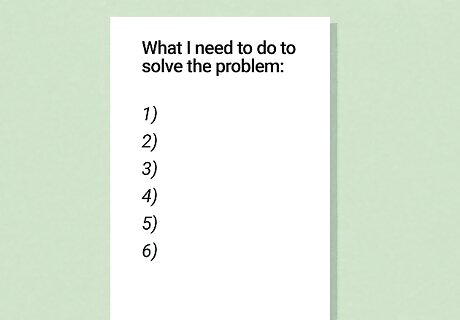
Write out what you need to do in order to get the answer. Make a step-by-step list of the things that you will need to do to solve the problem. This list will help you to stay organized and focused as you solve the problem. You can also use it to estimate the answer to the problem before you actually solve it.
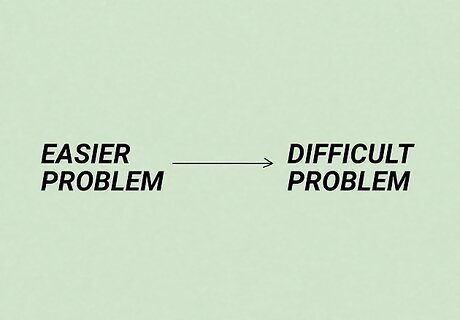
Work on an easier problem. If there is an easier problem available that is similar to the one you are trying to solve, work on the easier problem first. Solving an easier problem that requires some of the same steps and formulas will help you to tackle the more difficult problem.
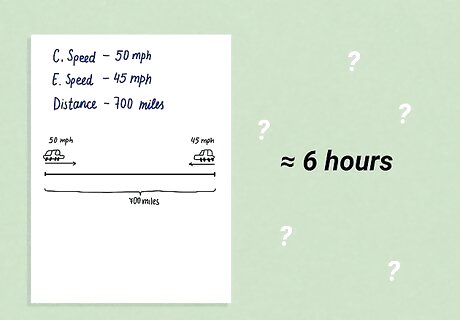
Make an educated guess about the answer. Try to estimate the answer before you actually begin to solve it. Identify the numbers and other factors that should contribute to your estimate. Review your estimate and how you made it to determine if you have left anything out.
Solving the Problem
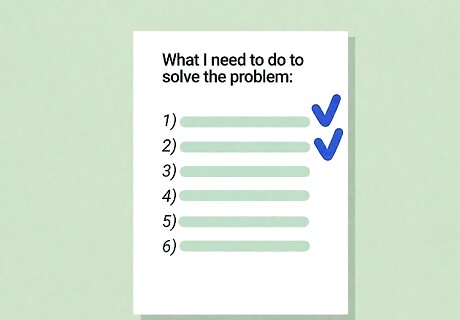
Follow your plan. Complete the steps that you have identified in the order that you have listed them. Double check each of your answers as you work to ensure accuracy.
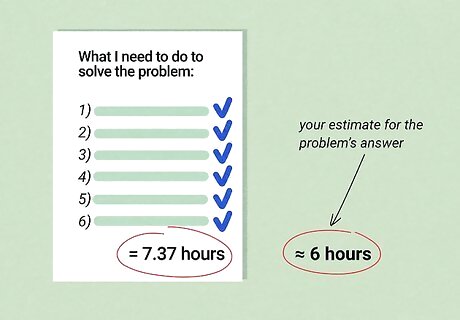
Compare your answers to your estimates. As you complete each step, you may also want to compare your answers to the estimates you came up with for each step as well as your overall estimate for the problem’s answer. Ask yourself, “Do my answers match or closely resemble my estimates?” If they do not match up, consider why. Check your answers to see if you have completed all of the steps correctly.
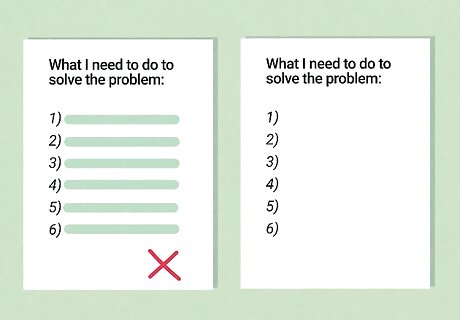
Try a different plan. If your plan is not working, go back to the planning stage and make a new plan. Don’t be discouraged if this happens, mistakes are common when you are just learning how to do something and you will learn from these mistakes. Accept your mistakes and move on. Try not to dwell on them or get upset.
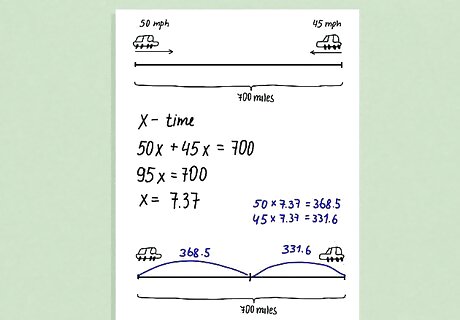
Reflect on the problem. When you have solved the problem correctly, look back at your process. Taking a moment to reflect on the problem and how you solved it will help you the next time you encounter a similar problem. It will also help you to identify any concepts that you need to learn more about and practice. EXPERT TIP Joseph Meyer Joseph Meyer Math Teacher Joseph Meyer is a High School Math Teacher based in Pittsburgh, Pennsylvania. He is an educator at City Charter High School, where he has been teaching for over 7 years. Joseph is also the founder of Sandbox Math, an online learning community dedicated to helping students succeed in Algebra. His site is set apart by its focus on fostering genuine comprehension through step-by-step understanding (instead of just getting the correct final answer), enabling learners to identify and overcome misunderstandings and confidently take on any test they face. He received his MA in Physics from Case Western Reserve University and his BA in Physics from Baldwin Wallace University. Joseph Meyer Joseph Meyer Math Teacher When doing practice problems, promptly check to see if your answers are correct. Use worksheets that provide answer keys for instant feedback. Discuss answers with a classmate or find explanations online. Immediate feedback will help you correct your mistakes, avoid bad habits, and advance your learning more quickly.

















Comments
0 comment